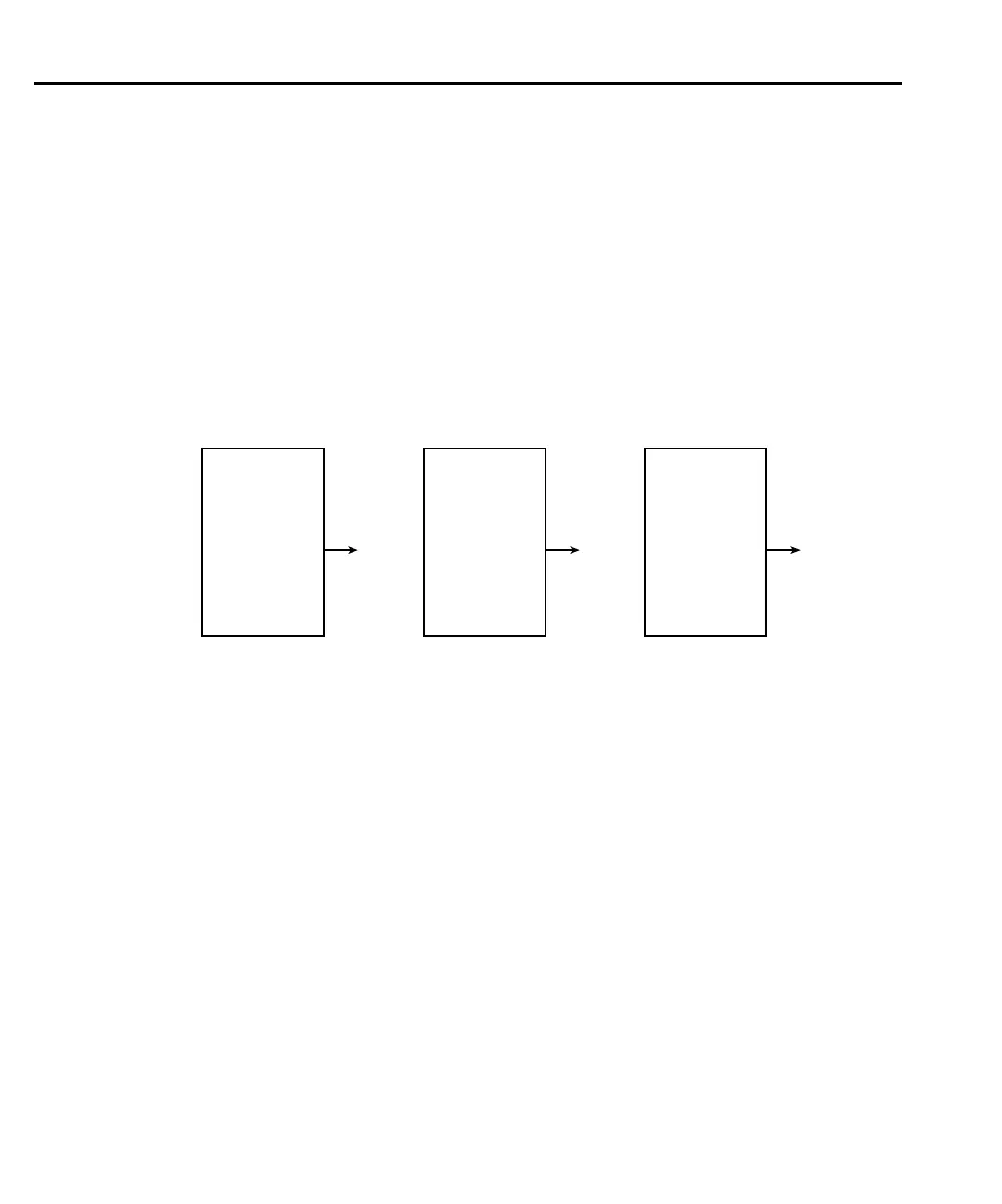6-12 Range, Digits, Speed, and Filters
Moving filter
The moving average filter uses a first-in, first-out stack. When the stack (filter count)
becomes full, the readings are averaged, yielding a filtered reading. For each subsequent read-
ing placed into the stack, the oldest reading is discarded. The stack is re-averaged, yielding a
new reading.
When the filter is first enabled, the stack is empty. Keep in mind that a Moving Filter reading
is not yielded until the stack is full. The first reading is placed in the stack and is then copied to
the other stack locations in order to fill it. Therefore, the first filtered reading is the same as the
first reading that entered the stack. Now the normal moving average filter process can continue.
Note that a true average is not yielded until the stack is filled with new readings (no copies in
stack). For example, in Figure 6-5, it takes ten filtered readings to fill the stack with new read-
ings. The first nine filtered readings are calculated using copied readings.
Advanced filter — The Advanced Filter is part of the Moving Filter. With the Advanced
Filter enabled, a user-programmable noise “window” is used with the Moving Filter. The noise
window, which is expressed as a percentage of range (0-105%), allows a faster response time to
large signal step changes. If the readings are within the noise window, the Moving Filter
operates normally as previously explained. If, however, a reading falls outside the window, the
stack is flushed of old readings and filled with the new reading.
For example, assume the window is set to 10% and the 10mA range is selected. Therefore,
the noise window is ±1mA (10mA × 10% = 1mA). Also assume the first reading is 2mA. Per
normal filter operation, the stack is filled with that reading. As long as each subsequent reading
is within ±1mA of the previous reading, the filter operates normally. Now assume a 10mA
noise spike occurs. This noise window violation causes the stack to flush out the old readings
and fill it with 10mA reading.
NOTE The Advanced Filter disables when Auto Filter is enabled.
NOTE If the Repeat or Median Filter is enabled, the Moving Filter operation will not start
until after the previous filter yields a reading. In other words, after a reading is
yielded from the Repeat or Median Filter, that reading will then be sent to the Mov-
ing Filter stack.
Reading #11
#10
#9
#8
#7
#6
#5
#4
#3
#2
Reading #1
•
•
•
Median
Reading
#1
Reading #12
#11
#10
#9
#8
#7
#6
#5
#4
#3
Reading #2
•
•
•
Median
Reading
#2
Reading #13
#12
#11
#10
#9
#8
#7
#6
#5
#4
Reading #3
•
•
•
Median
Reading
#3
Figure 6-5
Moving filter
(count 10)
